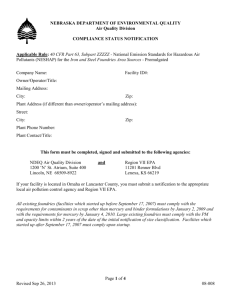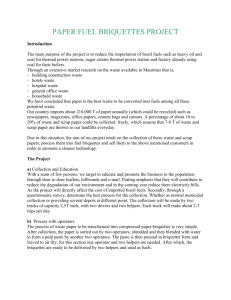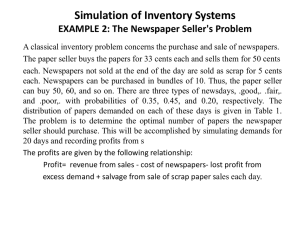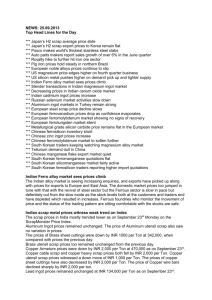Highlights Today - foundry informatics centre
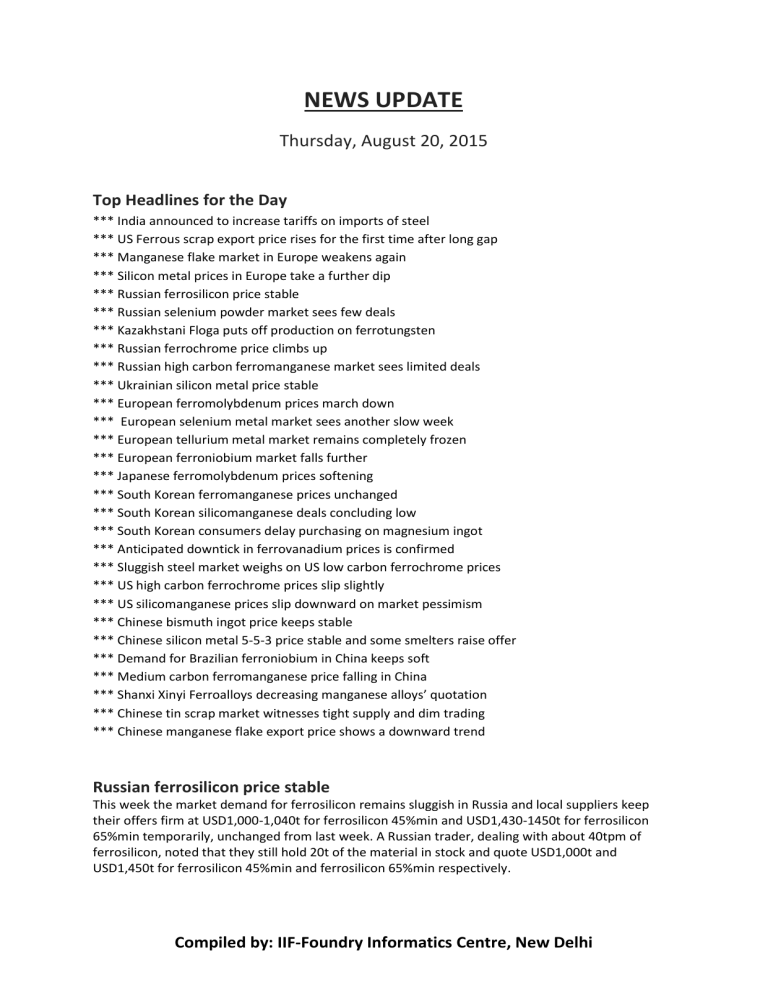
NEWS UPDATE
Thursday, August 20, 2015
Top Headlines for the Day
*** India announced to increase tariffs on imports of steel
*** US Ferrous scrap export price rises for the first time after long gap
*** Manganese flake market in Europe weakens again
*** Silicon metal prices in Europe take a further dip
*** Russian ferrosilicon price stable
*** Russian selenium powder market sees few deals
*** Kazakhstani Floga puts off production on ferrotungsten
*** Russian ferrochrome price climbs up
*** Russian high carbon ferromanganese market sees limited deals
*** Ukrainian silicon metal price stable
*** European ferromolybdenum prices march down
*** European selenium metal market sees another slow week
*** European tellurium metal market remains completely frozen
*** European ferroniobium market falls further
*** Japanese ferromolybdenum prices softening
*** South Korean ferromanganese prices unchanged
*** South Korean silicomanganese deals concluding low
*** South Korean consumers delay purchasing on magnesium ingot
*** Anticipated downtick in ferrovanadium prices is confirmed
*** Sluggish steel market weighs on US low carbon ferrochrome prices
*** US high carbon ferrochrome prices slip slightly
*** US silicomanganese prices slip downward on market pessimism
*** Chinese bismuth ingot price keeps stable
*** Chinese silicon metal 5-5-3 price stable and some smelters raise offer
*** Demand for Brazilian ferroniobium in China keeps soft
*** Medium carbon ferromanganese price falling in China
*** Shanxi Xinyi Ferroalloys decreasing manganese alloys’ quotation
*** Chinese tin scrap market witnesses tight supply and dim trading
*** Chinese manganese flake export price shows a downward trend
Russian ferrosilicon price stable
This week the market demand for ferrosilicon remains sluggish in Russia and local suppliers keep their offers firm at USD1,000-1,040t for ferrosilicon 45%min and USD1,430-1450t for ferrosilicon
65%min temporarily, unchanged from last week. A Russian trader, dealing with about 40tpm of ferrosilicon, noted that they still hold 20t of the material in stock and quote USD1,000t and
USD1,450t for ferrosilicon 45%min and ferrosilicon 65%min respectively.
Compiled by: IIF-Foundry Informatics Centre, New Delhi
Scrap aluminum sales retreat as LME prices slump
Scrap aluminum spot sales witnessed sharp slowdown in Japan following deep cut in LME metal prices. The spot trade of scrap aluminum witnessed sharp slowdown in Japan as LME prices for the metal continued to slide further. The spot trades of primary and secondary aluminum, especially from Russia and Europe, turned weak. The activity in Japanese domestic scrap market too remained subdued. Incidentally, 3-month aluminum contract on the LME plunged to $1,558 per mt-the lowest in several years.
According to scrap dealers, they find themselves in a difficult position as the LME prices often fall below their offer prices. They are already being forced to lower their offer prices. The constant decline in LME prices make them incline to further lowering of offer prices the next day, they said.
On account of huge fluctuation in prices, brokers have suspended spot scrap sales and are supplying only term buyers.
Many scrap sellers are unwilling to sell at lower prices. LME Aluminum prices have dropped almost
3% since the first week of August. However, scrap traders are reluctant to lower the spot scrap sell prices by 3%. This has made scrap trade almost stagnant. According to traders, the downside for aluminum looks limited now. The scrap aluminum market is likely to tighten further by end-August, following reopening of mills after regular week long temporary maintenance shutdown.
Meantime, 6063-A-grade extrusion scrap trades were concluded at Yen 190/kg ($1.52) delivered to
Kanto region during early-August. Buyers were seen quoting at a much lower rate of Yen 180-185/kg delivered. However, sellers were seen unwilling to settle for prices less than 190/kg. Also, some scrap items like tellic and engine scrap were reportedly running out of stock. The supplies of used beverage canstock continued to remain robust. Market participants anticipate further fall in prices of this category.
Turkey import of scrap steel market continues to rise
It is reported that Turkey import of scrap steel markets continued to rise, mixed waste, 1, 2nd
(80:20) price rose to US$240/ton (CFR), increase US$5/ton compared to early last week. According to source said that one of steel mill imports of mixed scrap from the Baltic Sea region, an average price at US$241/ton (CFR).
Further 30% drop in iron-ore prices could not be ruled out
The iron ore prices are likely to witness further fall of 30% over the next eighteen months, says the latest research note published by Goldman Sachs. The latest research report published by Goldman
Sachs Group indicates further fall in iron ore prices over forthcoming quarters. The report predicts
30% drop in the commodity prices over the period of next eighteen months, mainly on account of expanding supply chains and falling steel production.
Iron ore prices have staged strong rebound in the past several weeks as shipments from major exporters in Brazil and Australia dropped behind estimates. The rise in steel prices in China also led to sharp recovery in raw material prices during this period. According to Goldman Sachs, the supply disruptions at Chinese ports and the after effect of yuan devaluation are likely to have short term impact. The supplies will begin to grow soon, it noted.
Meantime, Goldman Sachs kept its iron ore price forecasts unchanged for the upcoming quarters.
The prices are likely to average at $49 per ton during the current quarter. The average prices are
Compiled by: IIF-Foundry Informatics Centre, New Delhi
likely to fall further to $48 per ton during Q4 this year. During first quarter of 2016, the prices may drop sharply to $44 per ton. The average price forecast for the entire year 2016 too has been kept unchanged at $44 per ton.
Goldman Sachs termed the recent recovery in prices as ‘the calm before the storm’. The prices will decline by nearly 30% over the next 18 months, it stated. The slide in prices would force a handful of miners to shut their operations permanently. Big players may see their operating margins squeezed.
The price crunch will have widespread impact on the entire industry, the group warns.
Meanwhile, ore with 62 per cent delivered to Qingdao fell 0.1 per cent to $US56.66 a dry ton on
Monday. Also, iron ore futures on the Dalian Commodity Exchange dropped 1 per cent on Monday.
Coal prices fall to 12-year lows as China, India join demand slowdown
Coal futures have fallen to 12-year lows, hit by soaring production and a slowdown in global buying, including from India and China which until recently have been pillars of strong demand. Benchmark
API2 2016 coal futures TRAPI2Yc1 last settled at $52.85 a tonne, a level not seen since November
2003. The contract is now over 75 per cent below its 2008 all-time peak and more than 60 percent below its most recent high following the 2011 Fukushima nuclear disaster in Japan.
The steady and sharp fall in coal prices has knocked down shares of big mining companies like BHP
Billiton, Glencore and Rio Tinto, and it has seen many financers exit the sector.
The price fall follows a rise in output from exporters like Australia at the same time as a sharp slowdown in overseas orders from major importers like the United States, and now also China and
India.
"Indian coal imports are now under pressure ... Both thermal and met coal imports ran at their weakest annualised rates since October 2014," Australian bank Macquarie said on Wednesday.
"Such a fall might not be just a temporary blip. On the thermal coal side we have seen power plant inventories reach record high levels, domestic production growth improve significantly and demand growth slow," it added.
Thermal coal is used in power plants while metallurgical coal is used to make iron ore. Demand from
China has also slowed as its economy grows at its slowest pace in decades and the government has started a fight against rampant pollution, to which coal contributes significantly. In the United
States, soaring natural gas from shale formations has made gas much cheaper, eating into coal's U.S. power generation share, and the government also plans to move away from coal for environmental reasons.
Demand in Europe has been flat as energy efficiency improves, renewables take increasing shares of the power mix and many of its economies struggle to grow. Yet at some point the low coal prices could also start to stimulate demand as it has made the fuel super-competitive against its main competitor, natural gas.
Reuters calculations show that the revenues from selling electricity generated from coal in Germany are around 20 euros per megawatt-hour higher than those produced from natural gas. Emerging markets which have yet to provide blanket electricity to its households and need cheap energy to develop their industry also still mostly rely on coal as their main fuel as they prioritize low costs over environmental concerns.
Compiled by: IIF-Foundry Informatics Centre, New Delhi



